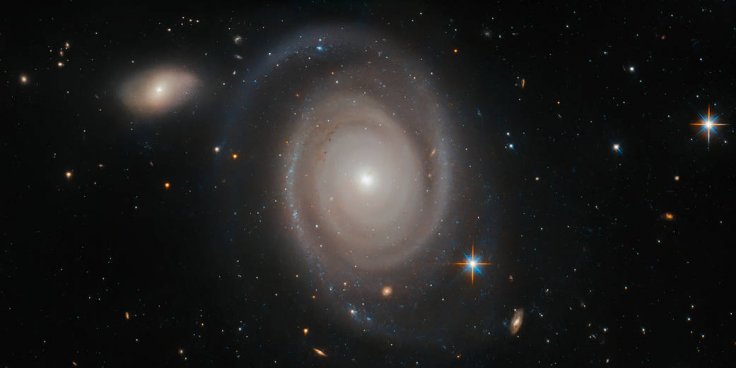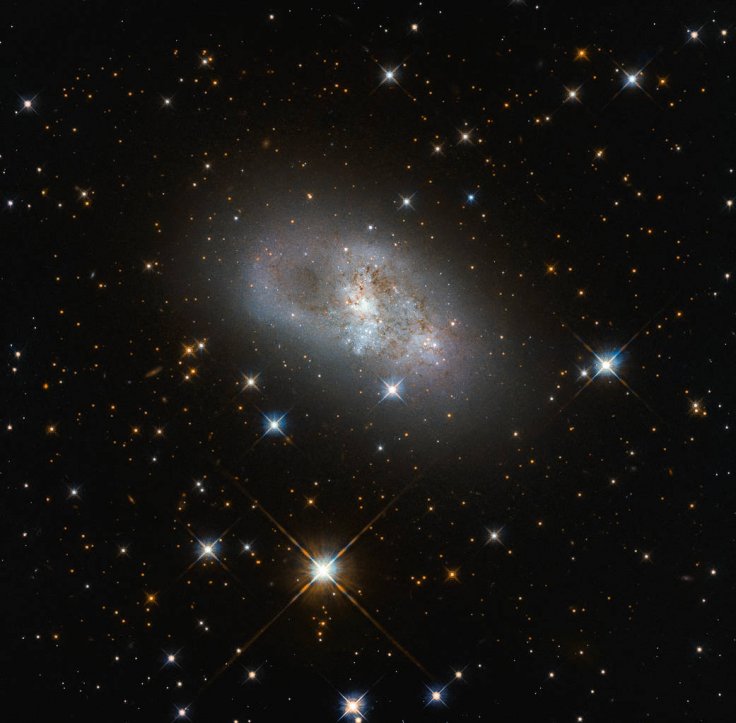
A stunning image of a distant spiral galaxy was recently photographed by the Hubble Space Telescope, which is operated through a partnership between NASA and the European Space Agency (ESA). Although it seems the photo only shows one galaxy, the space agencies noted that it is part of a massive galactic cluster.
The cluster featured in the space telescope's latest photo has been identified as NGC 1706. It is situated about 230 million light-years away from Earth and can be spotted within the constellation known as Dorado. NGC 1706 was first discovered by British astronomer John Herschel in 1837. Similar to Milky Way, where Earth is located, NGC 1706 is classified as a spiral galaxy. The galaxy's distinct shape can be seen in Hubble's latest photo through the wispy cosmic arms radiating from its centre.
"Galaxies may seem lonely, floating alone in the vast, inky blackness of the sparsely populated cosmos — but looks can be deceiving," the ESA explained in a statement. "This image of NGC 1706, taken by the NASA/ESA Hubble Space Telescope, is a good example of this. NGC 1706 is a spiral galaxy, about 230 million light-years away, in the constellation of Dorado."

Although Hubble's photo also seems to show one galaxy, the ESA noted that NGC 1706 is actually part of a massive cluster that contains up to 50 galaxies. Some of these appear in the photo as bright orbs. According to the ESA, these galactic clusters are bound together by their strong gravitational forces. About 50 per cent of all known galaxies, including Milky Way, are part of galactic clusters.
"NGC 1706 is known to belong to something known as a galaxy group, which is just as the name suggests — a group of up to 50 galaxies which are gravitationally bound and hence relatively close to each other," ESA stated. "Around half of the galaxies we know of in the universe belong to some kind of group, making them incredibly common cosmic structures. Our home galaxy, the Milky Way, belongs to the Local Group, which also contains the Andromeda galaxy, the Large and Small Magellanic clouds, and the Triangulum galaxy."









